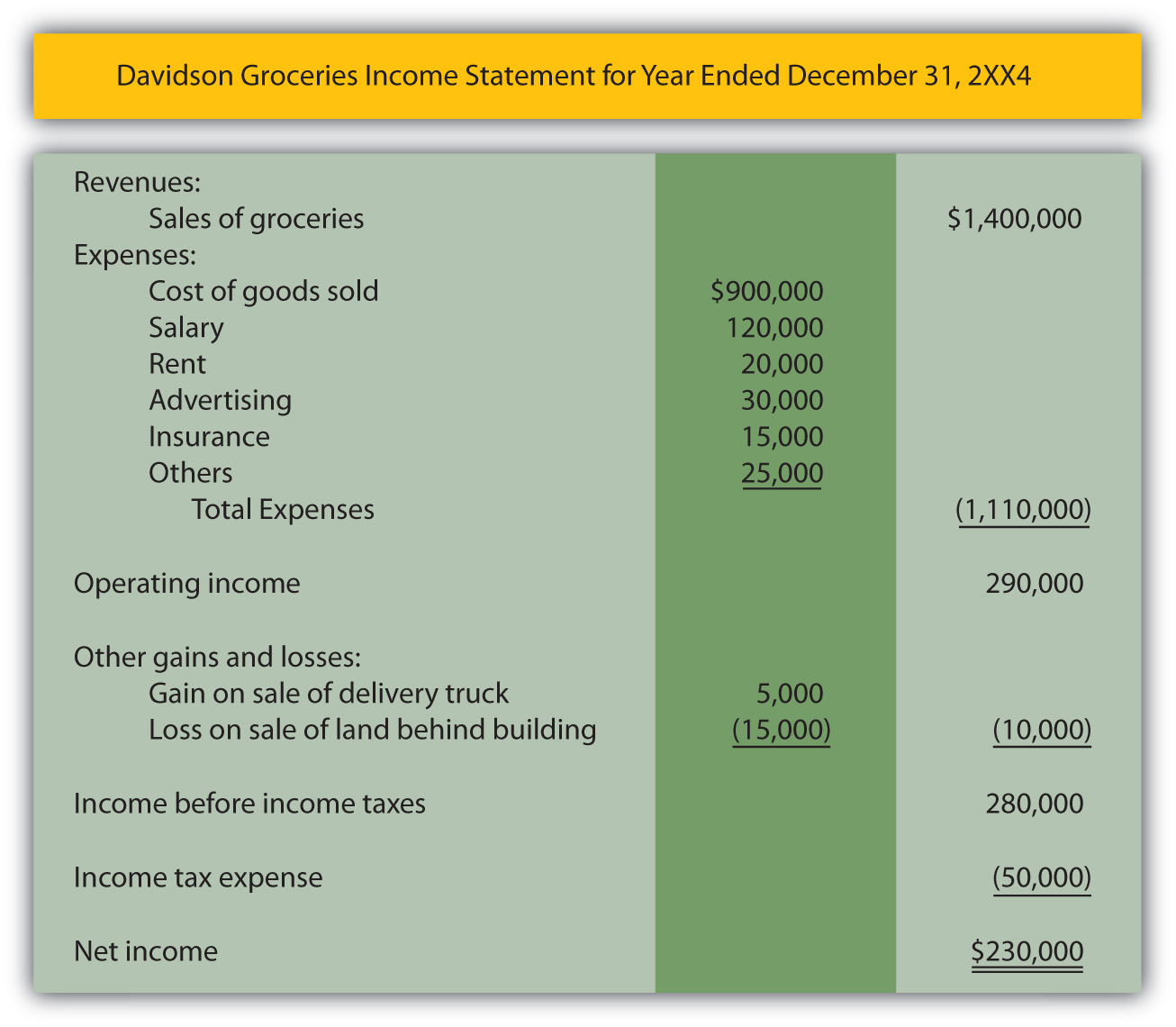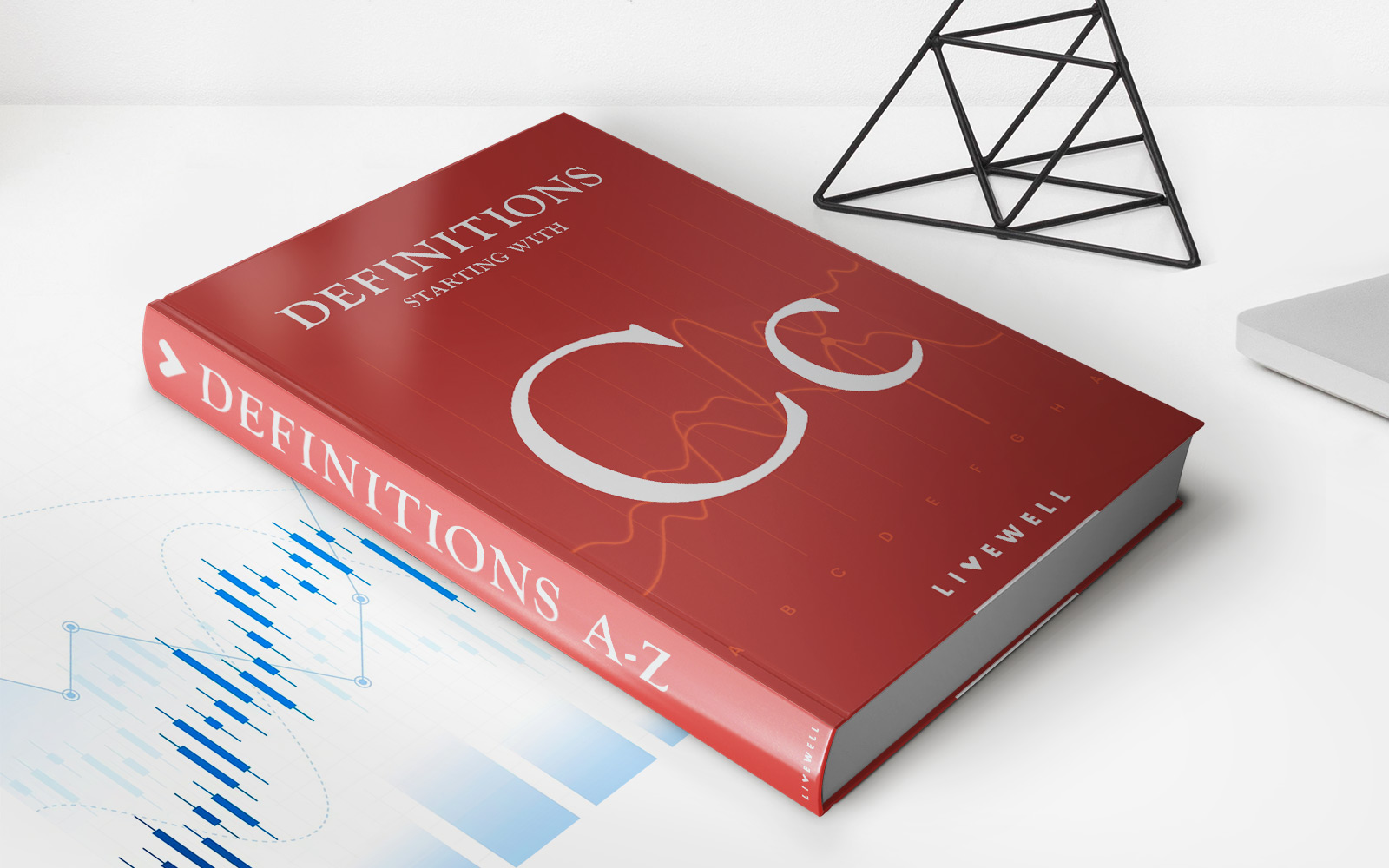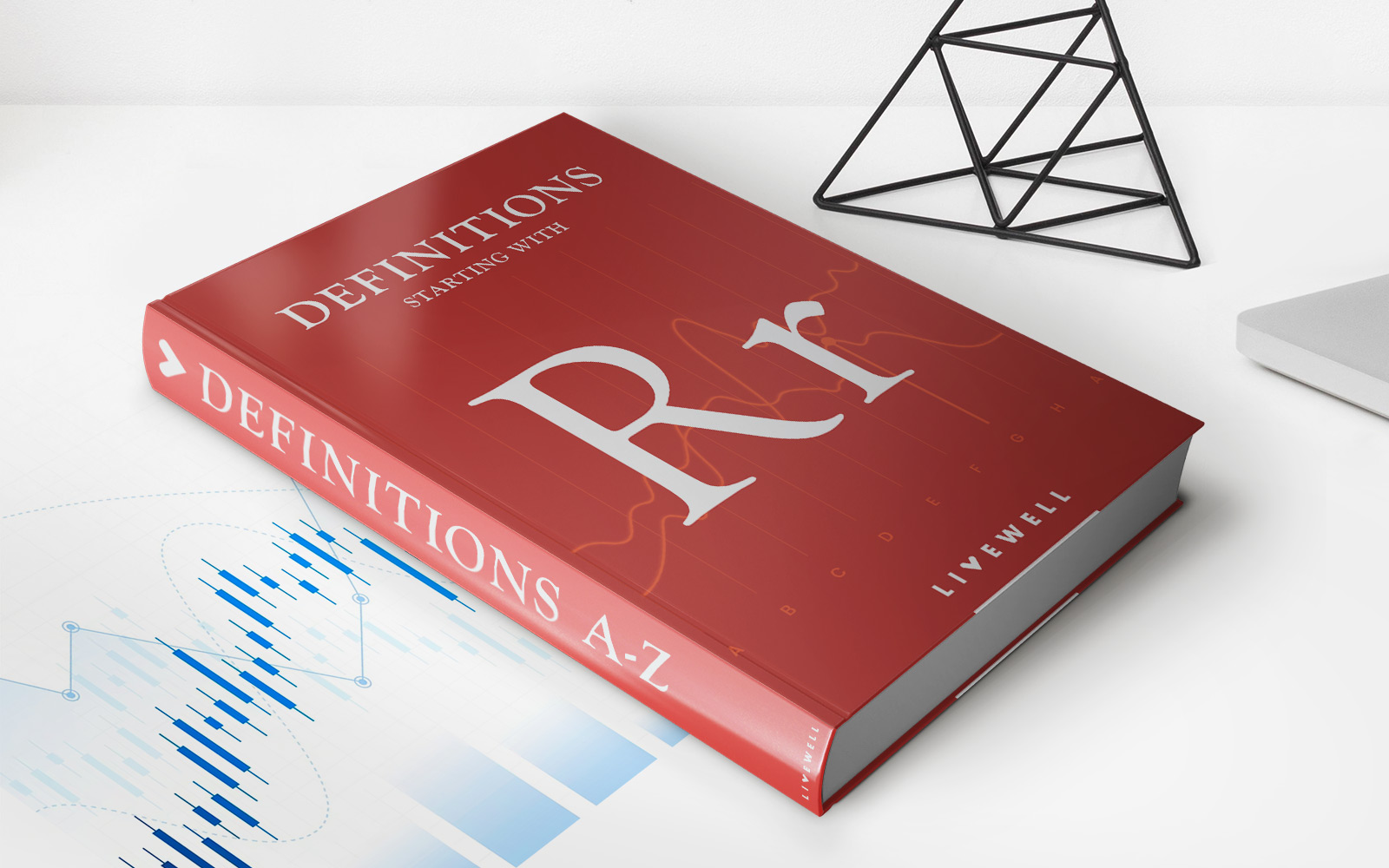Home>Finance>Why Companies Do Not Have Conservative Capital Structure


Finance
Why Companies Do Not Have Conservative Capital Structure
Published: December 24, 2023
Discover why companies often avoid having a conservative capital structure and the role of finance in shaping their decision-making.
(Many of the links in this article redirect to a specific reviewed product. Your purchase of these products through affiliate links helps to generate commission for LiveWell, at no extra cost. Learn more)
Table of Contents
- Introduction
- Definition of capital structure
- Determinants of capital structure
- The Impact of Target Capital Structure
- Factors influencing companies’ capital structure decisions
- Reasons why companies do not have a conservative capital structure
- Case studies of companies with non-conservative capital structures
- Benefits and drawbacks of having a non-conservative capital structure
- The role of industry dynamics in capital structure decisions
- Conclusion
Introduction
When it comes to managing their finances, companies have to make various strategic decisions that can impact their long-term success. One of these decisions is determining their capital structure, which refers to the mix of debt and equity used to finance the company’s operations and growth. A conservative capital structure is one that favors equity financing over debt financing, ensuring a lower risk and higher stability for the company.
However, it is not uncommon to find companies that do not have a conservative capital structure. Instead, they opt for a more aggressive approach by relying heavily on debt financing. This deviation from a conservative capital structure can be influenced by several factors, including industry dynamics, growth opportunities, and market conditions.
In this article, we will explore why some companies choose not to have a conservative capital structure. We will discuss the determinants of capital structure, the impact of target capital structure, and the factors influencing companies’ capital structure decisions. Additionally, we will analyze case studies of companies with non-conservative capital structures and examine the benefits and drawbacks of adopting such an approach. Lastly, we will delve into the role of industry dynamics in shaping companies’ capital structure decisions.
By understanding the reasons behind non-conservative capital structures, we can gain insights into the strategic decisions made by companies and how they manage their financial risk. Whether it is a deliberate choice to take advantage of growth opportunities or a response to industry dynamics, the decision to deviate from a conservative capital structure can have a significant impact on a company’s financial stability and long-term success.
Definition of capital structure
Before diving deeper into the reasons why companies do not have a conservative capital structure, it is important to understand what capital structure entails. In simple terms, capital structure refers to how a company funds its operations and investments through a combination of debt and equity.
Equity financing involves raising funds by selling ownership shares of the company, either through issuing common stock or by retaining earnings. Debt financing, on the other hand, involves borrowing money from various sources such as banks, bondholders, or other financial institutions that require repayment with interest.
The capital structure of a company can be represented as a ratio between debt and equity. This ratio determines the financial risk faced by the company, as a higher proportion of debt increases the risk of default and financial distress.
A conservative capital structure is one that prioritizes equity financing and maintains a lower level of debt. This approach helps to ensure stability and confidence among creditors and investors, as there is a higher level of ownership equity to absorb potential losses.
Contrastingly, a non-conservative capital structure involves relying heavily on debt financing, resulting in a higher leverage ratio. While this approach may offer certain advantages in terms of tax benefits, interest deductions, and increased potential returns to equity holders, it also exposes the company to higher financial risks.
It is important to note that the optimal capital structure for a company depends on various factors such as the industry it operates in, its growth prospects, profitability, cash flow stability, and availability of financing options. Each company’s capital structure will be unique, reflecting its specific needs and circumstances.
Understanding the definition and significance of capital structure provides a foundation for exploring why some companies deviate from a conservative approach. By examining the determinants and impact of capital structure choices, we can gain insights into the strategic decisions made by companies and the reasons behind their capital structure preferences.
Determinants of capital structure
Several factors play a role in determining a company’s capital structure. These factors encompass both internal and external influences and can vary from one company to another. Understanding these determinants is crucial to comprehend why some companies opt for non-conservative capital structures.
1. Business Risk: The nature and volatility of a company’s business operations can impact its capital structure. Companies operating in highly risky or cyclical industries may have a higher dependence on debt financing to capitalize on growth opportunities or mitigate business risks.
2. Financial Flexibility: Companies with a strong financial position and ample cash flow may have the flexibility to rely on equity financing instead of taking on excessive debt. This allows them to maintain a conservative capital structure and reduce their exposure to financial risks.
3. Profitability and Cash Flow: The profitability and cash flow generation capacity of a company can influence its capital structure decisions. Profitable companies with consistent cash flows may be more inclined to use internally generated funds or equity financing to meet their financial needs.
4. Growth Opportunities: Companies undergoing rapid growth or expansion may choose to finance their investments and acquisitions through debt financing. This allows them to leverage their existing assets to fund growth, take advantage of opportunities, and maximize shareholder returns.
5. Tax Considerations: Tax implications can significantly impact a company’s capital structure decisions. Debt financing offers tax advantages such as interest deductions, effectively reducing taxable income. This can incentivize companies to rely more on debt as a source of financing.
6. Market Conditions: The prevailing market conditions and interest rates can influence a company’s choice of capital structure. When interest rates are low, companies may be more inclined to take on debt financing at favorable terms, while high interest rates could discourage excessive debt.
7. Industry Expectations: Companies may consider industry norms and expectations when determining their capital structure. This can be influenced by the capital structure choices of industry peers and the expectations of creditors and investors within that particular sector.
It is important to note that these determinants are not mutually exclusive and can interact with each other to shape a company’s capital structure. Companies evaluate and prioritize these factors based on their specific circumstances and strategic goals.
By understanding the determinants of capital structure, we can gain insights into why companies deviate from a conservative approach. Companies weigh these factors to find the optimal capital structure that aligns with their business objectives, risk tolerance, and market dynamics.
The Impact of Target Capital Structure
A company’s target capital structure refers to the desired mix of debt and equity that management aims to achieve in the long term. This target serves as a guideline for financing decisions and influences the overall financial stability and risk profile of the company.
The target capital structure has several significant impacts on a company:
1. Financial Risk: A higher proportion of debt in the capital structure increases the financial risk faced by the company. This is because debt holders have a legal claim on the company’s assets and cash flows, and failure to meet debt obligations can result in severe consequences such as bankruptcy or business insolvency. On the other hand, a higher proportion of equity can help mitigate financial risk as equity holders bear the losses first.
2. Cost of Capital: The composition of the capital structure affects the cost of capital for the company. Debt financing typically carries a lower cost compared to equity financing due to tax deductibility of interest payments and a pre-determined interest rate. However, a company with a higher proportion of debt may face higher interest expenses, which can increase overall financing costs and potentially impact profitability.
3. Flexibility and Financial Constraints: The target capital structure can impact a company’s financial flexibility. A conservative capital structure with a lower level of debt provides greater flexibility in managing cash flows, making investments, and responding to market changes. In contrast, a high level of debt can limit a company’s ability to raise additional funds and make strategic business decisions due to higher debt servicing obligations and financial constraints.
4. Investor Perception: The choice of capital structure can influence investor perception and confidence in the company. Investors may assess a company’s risk profile, stability, and growth potential based on its capital structure. A conservative capital structure may attract risk-averse investors who prioritize stability, while a more aggressive structure may attract investors seeking higher potential returns but accept a higher level of risk.
5. Valuation and Market Value: Capital structure decisions can impact a company’s valuation and market value. A higher level of debt in the capital structure can result in increased financial leverage, which, in turn, can amplify the company’s earnings and returns to equity investors. Conversely, a higher level of equity may result in a lower valuation due to increased dilution and reduced potential returns.
It is important for companies to align their target capital structure with their overall business strategy, risk appetite, and market conditions. Regular monitoring and adjustments may be necessary to ensure the target capital structure remains relevant and optimal in the dynamic business environment.
Understanding the impact of target capital structure helps shed light on the rationale behind companies deviating from a conservative approach. Factors such as risk tolerance, financing costs, growth objectives, and investor preferences all play a role in determining the target capital structure and its subsequent impact on the company.
Factors influencing companies’ capital structure decisions
Companies’ capital structure decisions are influenced by a multitude of factors that can vary based on industry, company size, growth prospects, and overall market conditions. These factors play a critical role in shaping the financing choices companies make. Here are key factors that influence capital structure decisions:
1. Business risk and industry dynamics: Companies operating in different industries face varying levels of business risk. Industries with stable cash flows and steady demand may have a lower risk tolerance, leading them to opt for a conservative capital structure. Conversely, industries characterized by high volatility or cyclical nature may require a more leveraged approach to capitalize on growth opportunities.
2. Growth prospects and investment opportunities: Companies with significant growth prospects may opt for a more aggressive capital structure to finance their expansion plans. Debt financing allows them to leverage their existing assets and generate higher returns on equity. It provides an opportunity to take advantage of investment opportunities without diluting existing shareholders’ ownership.
3. Profitability and cash flow stability: Companies with strong profitability and stable cash flows may have a greater ability to service their debt obligations. This financial strength reduces the perceived risk associated with debt financing and allows them to maintain a more liberal capital structure. Conversely, companies with volatile revenues or uncertain profitability may prefer a conservative approach to mitigate the risk of financial distress.
4. Tax considerations: The impact of taxes acts as an important factor in capital structure decisions. Interest payments on debt are typically tax-deductible, reducing the overall tax liability for companies. This tax shield makes debt financing more attractive as it helps optimize the company’s tax position and improves cash flow available for other activities.
5. Access to capital markets: Companies’ access to capital markets, such as equity markets and debt markets, can influence their capital structure decisions. A company with easy access to equity markets may prefer equity financing as it provides an opportunity to raise funds without incurring additional debt obligations. On the other hand, limited access to capital markets may lead companies to rely more heavily on debt financing as a more readily available source of funds.
6. Cost of capital: The cost of debt and equity financing is an important consideration in capital structure decisions. Companies compare the cost of debt, including interest payments and associated fees, with the cost of equity, including expected returns to shareholders. Depending on prevailing interest rates, market conditions, and the company’s creditworthiness, the cost differential between debt and equity financing can influence decision-making.
7. Market sentiment and investor preferences: The market sentiment and investor preferences impact the capital structure decisions of companies. Investors may have varying risk appetites and preferences for certain types of returns. Companies take investor expectations into account while developing their capital structure to attract the desired investor base and optimize their cost of capital.
These factors interplay with each other, and companies assess them based on their specific circumstances and strategic goals. Capital structure decisions are not static and may evolve over time as companies adapt to changing market conditions and business requirements.
By understanding the factors that influence capital structure decisions, companies can make informed choices that align with their growth objectives, financial strength, and risk tolerance. This strategic approach ensures the optimal utilization of resources and enhances the company’s long-term financial stability.
Reasons why companies do not have a conservative capital structure
While a conservative capital structure is often seen as a prudent approach, there are several reasons why companies deviate from this conservative stance and opt for a more aggressive capital structure. These reasons can vary based on industry dynamics, growth prospects, financial strategy, and market conditions. Here are some common reasons:
1. Growth and expansion: Companies with ambitious growth plans may opt for a non-conservative capital structure to fuel their expansion. By taking on higher levels of debt, they can leverage their assets and generate the necessary capital to invest in new markets, acquisitions, and research and development. This allows them to seize growth opportunities and potentially boost shareholder value.
2. Tax benefits: Debt financing offers tax advantages, such as interest deductions, which can reduce a company’s taxable income. By utilizing debt financing, companies can potentially lower their overall tax liability, resulting in increased cash flows available for other purposes. This tax shield acts as an incentive for companies to favor debt financing and deviate from a conservative capital structure.
3. Cost of capital: Debt financing is often cheaper than equity financing due to lower interest rates and tax benefits. Companies may opt for higher debt levels to optimize their cost of capital. By taking advantage of lower borrowing costs, companies can enhance their returns on equity and potentially improve overall financial performance.
4. Market conditions and access to capital: Favorable market conditions such as low interest rates, strong credit ratings, and easy access to capital markets can influence a company’s capital structure decisions. Companies may decide to take advantage of these conditions by increasing their debt levels and benefiting from lower borrowing costs. Additionally, limited access to equity markets may drive companies to rely more heavily on debt financing as a readily available source of funds.
5. Industry dynamics and competition: In industries characterized by high leverage ratios or where debt is common, companies may feel compelled to match their competitors’ capital structures. This is especially true in industries with high barriers to entry, where leveraging assets and access to debt financing may be necessary to remain competitive.
6. Cash flow predictability: Companies with stable and predictable cash flows may feel comfortable taking on more debt. This is because they have the confidence that they can meet the debt obligations without being financially strained. Such companies may see the benefits of using leverage to maximize their returns on equity.
7. Shareholder preferences: In some cases, shareholders may prefer a more aggressive capital structure. Investors seeking higher potential returns may be attracted to companies that utilize debt to amplify their earnings and returns on equity. By adopting a non-conservative capital structure, companies may be able to attract these investors and enhance shareholder value.
It is crucial to note that while deviating from a conservative capital structure may offer benefits, it also carries higher financial risks. Companies must carefully evaluate their risk tolerance, financial flexibility, and ability to meet debt obligations before opting for a non-conservative capital structure.
By considering these reasons, companies can make strategic capital structure decisions that align with their growth objectives, optimize their cost of capital, and appeal to their shareholders’ preferences. Balancing the potential benefits with the associated risks is essential for long-term financial sustainability.
Case studies of companies with non-conservative capital structures
Examining case studies of companies with non-conservative capital structures provides valuable insights into the reasons why companies make such strategic decisions and the potential outcomes they experience. Here are a few noteworthy examples:
1. Tesla Inc. (TSLA): Tesla, the electric vehicle manufacturer, is known for its aggressive capital structure. The company has relied heavily on debt financing to fund its ambitious expansion plans and invest in research and development. Despite its significant debt levels, Tesla has managed to attract investors who believe in its growth potential and market dominance. Tesla’s decision to prioritize growth and innovation over a conservative capital structure has contributed to its market success, although it also comes with financial risks and challenges in servicing its debt.
2. Uber Technologies Inc. (UBER): Uber, the global ride-hailing company, has also pursued a non-conservative capital structure. The company leveraged debt financing to fuel its rapid expansion into new markets and invest in technology development. By utilizing debt, Uber was able to quickly scale its operations and dominate the ride-hailing industry. However, the company faces ongoing challenges in achieving profitability and managing its debt burden, showcasing the potential risks associated with a non-conservative capital structure.
3. Amazon.com Inc. (AMZN): Amazon, the e-commerce giant, has historically exhibited a more aggressive capital structure. The company has utilized debt financing to support its growth initiatives, including acquisitions, building new infrastructure, and expanding its product offerings. Amazon’s ability to access debt markets and fund its growth has contributed to its market dominance and continuous innovation. However, the company’s high debt levels require careful debt management and financial discipline.
4. Netflix Inc. (NFLX): Netflix, the streaming service provider, has pursued a non-conservative capital structure to finance its content production and global expansion. The company has taken on significant debt to invest in original programming and secure licensing rights. By utilizing debt financing, Netflix has been able to rapidly grow its subscriber base and expand its content library. However, the company faces challenges in generating consistent positive cash flows and managing its debt obligations, highlighting the potential risks of a non-conservative capital structure.
These case studies illustrate that companies with non-conservative capital structures often prioritize growth, innovation, and market dominance over maintaining a lower debt level. They demonstrate how leveraging debt can enable companies to seize opportunities, invest in expansion, and disrupt their industries. However, it is essential to note that such decisions come with risks, including increased financial obligations, interest expenses, and the need for sustained profitability to service the debt.
Companies must carefully assess their risk appetite, market dynamics, and growth prospects before deviating from a conservative capital structure. Balancing growth objectives with financial stability is crucial to ensure long-term success and the ability to meet debt obligations.
Benefits and drawbacks of having a non-conservative capital structure
Having a non-conservative capital structure, characterized by a higher proportion of debt financing, can offer certain benefits and drawbacks for companies. It is important for businesses to carefully consider these factors when making capital structure decisions. Here are some key benefits and drawbacks:
Benefits:
1. Increased leverage and growth potential: By relying on debt financing, companies can leverage their existing assets and generate higher returns on equity. The increased leverage allows companies to fund expansion initiatives, invest in research and development, and fuel growth in a relatively short period of time.
2. Tax advantages: Debt financing offers tax benefits as interest payments are tax-deductible. This reduces the company’s taxable income and improves cash flow available for other purposes. These tax advantages can make debt financing more attractive compared to equity financing, as it optimizes the company’s tax position.
3. Enhanced financial flexibility: Non-conservative capital structures offer companies greater financial flexibility. By utilizing debt financing, companies can preserve cash reserves for other corporate activities, such as marketing initiatives, working capital management, or strategic investments. This flexibility allows companies to adapt to market conditions and invest in growth opportunities.
Drawbacks:
1. Increased financial risk: Having a higher proportion of debt exposes companies to increased financial risk. Debt obligation servicing becomes a priority, and failure to meet debt payments could lead to financial distress, default, or bankruptcy. This financial risk can be especially challenging during economic downturns or when businesses face unexpected market changes.
2. Higher interest expenses: Debt financing comes with interest payments that companies must make regularly. Higher debt levels mean increased interest expenses, which can reduce profitability and cash flows available for other business activities. Excessive interest payments can put strain on the company’s financial health and limit its ability to invest in future growth.
3. Potential constraints on future financing: Non-conservative capital structures can limit a company’s ability to raise additional funds in the future. High debt levels may lead to higher interest rates, increased borrowing costs, and reduced creditworthiness, making it challenging to access debt markets or seek equity financing. Limited financing options can hinder growth opportunities and constrain the company’s strategic choices.
4. Investor perception and confidence: Non-conservative capital structures may raise concerns among investors about the company’s financial health and stability. Shareholders and potential investors may view high debt levels as a significant risk factor and may demand higher returns to compensate for the increased financial risk. This can lead to lower valuations and potentially impact the company’s market reputation.
It is crucial for companies to carefully evaluate the trade-offs between the benefits and drawbacks of a non-conservative capital structure. Consideration of risk tolerance, financial stability, growth prospects, and market conditions is essential to ensure the chosen capital structure aligns with the company’s long-term objectives and supports sustainable growth.
The role of industry dynamics in capital structure decisions
Industry dynamics play a significant role in shaping companies’ capital structure decisions. The unique characteristics, competitive landscape, and market conditions within an industry can influence the optimal mix of debt and equity financing. Here are key ways in which industry dynamics influence capital structure decisions:
1. Risk profiles: Different industries entail varying levels of risk. Highly volatile or cyclical industries, such as technology or commodities, often experience significant fluctuations in cash flows and profitability. Companies operating in these industries may prefer a more conservative capital structure to mitigate the risk of financial distress during downturns. In contrast, industries with stable cash flows, such as utilities or consumer staples, may afford companies the opportunity to utilize a more leveraged capital structure.
2. Financing norms: Industry norms and practices can influence capital structure decisions. Industries with established financing norms may exert pressure on companies to align their capital structures accordingly. For example, industries that traditionally rely on a high level of debt financing, like the real estate sector, may incentivize companies to adopt similar capital structures to remain competitive and attract investors.
3. Capital intensity: Industries with high capital intensity often require substantial upfront investments in assets and infrastructure. Companies in these industries may choose to utilize debt financing to cover the significant costs of acquiring or building assets. By leveraging assets, companies can optimize their capital structure and allocate more equity for other purposes such as working capital or growth initiatives.
4. Market conditions and growth opportunities: Industry-specific market conditions can influence capital structure decisions. Industries experiencing rapid growth and expanding markets may incentivize companies to pursue more aggressive capital structures. These companies leverage debt to fund capital expenditures, acquisitions, or market expansion, allowing them to capture market share and capitalize on growth opportunities.
5. Competitive considerations: The competitive landscape within an industry can have an impact on capital structure decisions. Competitive industries may drive companies to adopt more aggressive capital structures in order to finance aggressive expansion plans or differentiate themselves from competitors. Furthermore, the threat of entry by new players or the need to stay ahead of industry trends can prompt companies to seek additional financing to fund innovation and maintain a competitive edge.
6. Industry-specific regulation and government support: The regulatory environment and government support within an industry can influence capital structure decisions. Certain industries may be eligible for government grants, subsidies, or special loan programs, encouraging companies to utilize debt financing. These incentives can help companies optimize their capital structures and reduce the cost of capital.
It is important for companies to understand the industry dynamics and consider the specific factors that influence capital structure decisions within their respective sectors. By aligning their capital structure with industry norms, risk profiles, growth opportunities, and regulatory environments, companies can make informed financing decisions that support their strategic objectives and position them competitively within their industries.
Conclusion
Capital structure decisions are critical for companies as they impact financial stability, risk exposure, and growth opportunities. While a conservative capital structure is often considered a prudent approach, some companies deviate from this path and opt for a non-conservative capital structure. This decision can be influenced by a variety of factors, including growth prospects, tax considerations, market conditions, and industry dynamics.
Throughout this article, we discussed the definition of capital structure and its importance in financing decisions. We explored the determinants of capital structure, such as business risk, profitability, and growth opportunities, which guide companies in their financing choices. Additionally, we examined the impact of target capital structure on financial risk, cost of capital, and investor perception.
We then delved into the reasons why companies opt for a non-conservative capital structure, such as pursuing growth opportunities, leveraging tax benefits, and taking advantage of favorable market conditions. We highlighted case studies of companies like Tesla, Uber, Amazon, and Netflix, which illustrate how a non-conservative capital structure can fuel expansion, innovation, and market dominance, alongside the financial risks that accompany it.
We also discussed the benefits and drawbacks of having a non-conservative capital structure, emphasizing the potential for increased leverage, tax advantages, and financial flexibility, as well as the risks of higher financial risk, interest expenses, and constraints on future financing.
Furthermore, we explored the role of industry dynamics in shaping capital structure decisions, including risk profiles, financing norms, capital intensity, market conditions, and competitive considerations. Understanding industry-specific influences is crucial for companies to make informed capital structure decisions that align with their business objectives and market dynamics.
In conclusion, capital structure decisions are complex and multifaceted. Companies must carefully evaluate their risk appetite, growth prospects, financing options, and investor preferences when deciding on a capital structure that suits their specific circumstances. A well-considered capital structure can support growth, enhance financial stability, and drive long-term success, while an inappropriate choice may pose significant risks to the company’s financial health.
By understanding the factors influencing capital structure decisions and considering the benefits and drawbacks of different approaches, companies can strike a balance between risk and opportunity, ensuring a strong foundation for sustainable growth and value creation in the ever-evolving business landscape.














